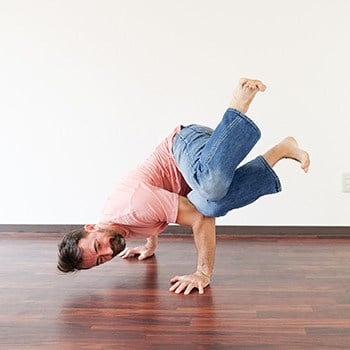What if a simple breathing exercise could help you get through your workouts easier, be less winded, recover faster between sessions, and feel less stressed throughout your day?
By learning how to breathe through your nose and regulate your breath, you can do all of that and more.
In this article, we’ll show you how to practice nasal breathing to make your training better and help you lessen your recovery time between sessions.
Why Should You Care About Breathing Exercises?
Breathing is something we do unconsciously. It’s a habit you’re probably not thinking about until it’s brought to your attention.
Like right now.
Notice:
- Are you breathing through your nose or mouth?
- Are you taking deep or shallow breaths?
- Do you have any obstructions?
- Is your nose stuffy?
The key to breathing correctly, which we’ll cover in a bit, is to first start by paying attention.
Conscious control of the breath is a practice that is thousands of years old. Most mindfulness and meditation forms will have you focus on your breath as a way of keeping you centered.
If you’ve never had to pay attention to your breathing patterns, consider yourself lucky. But most will benefit from learning how to breathe correctly, especially if you’re under mental pressure or physical stress.
🔑 Breath Regulation Is The Key
The goal of a breathing exercise that helps you breathe through your nose is to give you control over your body. You’re not just practicing breathing for the sake of it.
The goal is to make everything better, not just in your training, but anything you’re doing throughout the day.
When you learn to control your breath, you will be able to:
- Get through your workouts easier
- Have more control over the intensity of the movements you’re practicing
- Be able to catch your breath faster in between intense sets
- Recover better in the short term (in between sets) and long term (your days off between sessions).
- Lower your heart rate and reduce stress nearly on command
- Feel better as a result of everything above
Learning how to regulate your breath is a simple process. All you have to do is practice.
To show you how simple it is to take control and turn your focus to nasal breathing, Ryan demonstrates a simple exercise you can do now, as well as how it should be incorporated with exercise:
Now, let’s get into why nasal breathing is so important.
Nasal Breathing As Your Baseline
If you’ve read anything about breathing, you might know that it’s ideal to breathe through your nose most of the time. Most people at rest are breathing through their nose (sans any obstruction), while their belly slowly extends on the inhale and contracts on the exhale.
Pay attention to your breath right now. Notice how it feels. Is it easy? Hard? Are you breathing through your nose or mouth?
As a kid, I remember whenever someone told me to take a deep breath, I would immediately suck in a bunch of air through my mouth and expand my chest. This is a common thing to do because when thinking about breathing, we tend to imagine our lungs filling up with air.
And if you remember anything from anatomy class, the lungs are in your chest, inside of your ribs, not in your belly, so that action makes sense.
The big muscle below your lungs is your diaphragm. That muscle is what helps pull the air into your lungs and that’s why your belly expands. When you try to stick out your chest during a deep breath, it can keep you from inhaling fully because it takes away your attention from fully using the diaphragm.
Under Stress, We Naturally Hold Our Breath
I remember the last time I was moving house. I would grab a big, heavy box and walk up a few flights of stairs. Once I got to the top and put the box down, I’d be huffing and puffing, taking in lots of air through my mouth. Sometimes, I’d even get dizzy and have to sit down.
The reason for this is when you’re exerting yourself at a high intensity, you naturally brace yourself by holding your breath. We all do this by default because it’s the easiest (and safest) way to give a max effort.
But most of us don’t realize we’re holding our breath until we catch ourselves gasping for air.
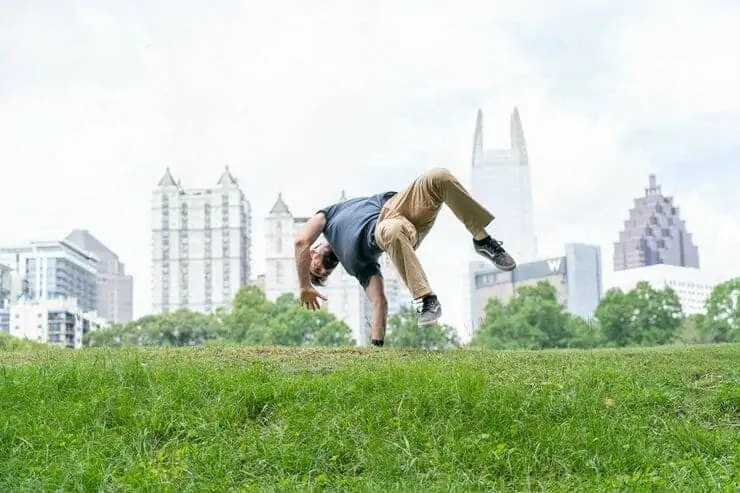
And this makes sense. When you hold your breath while lifting something heavy, or working on a hard movement, you’re able to keep your body stiff and strong, which is a protective mechanism. The more tension you create, the stronger and potentially safer you are when working at a high intensity.
But bracing is not a good habit to get into during exercise because it usually means:
- You’re pushing too hard.
- You need to dial back your intensity to a level that suits you.
Ideally, we want to get to a point where most of our breathing happens through our nasal cavity, not our mouth, even during exercise.
We’ll get into the specifics in a moment, but in general, if you’re constantly winded, you’re pushing yourself too hard.
Why Breathing Through Your Nose Matters
The research tells us that excessive mouth-breathing is associated with higher stress levels, lower quality sleep, and having less energy. If you have an obstruction in your nasal cavity (usually caused by colds, allergies, sinus infections, or medication), it can make breathing through your nose harder, so the default action is to breathe through your mouth.
So, if you find it hard to breathe through your nose easily, then it’s worth investigating why and learning how to nasal breathe more regularly.
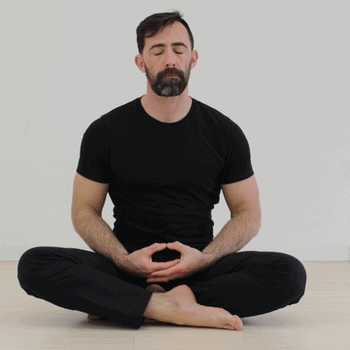 Nasal breathing helps activate the parasympathetic nervous system, which is responsible for relaxation and recovery. Parasympathetic means ‘rest and digest’ and sympathetic means ‘fight or flight.’
Nasal breathing helps activate the parasympathetic nervous system, which is responsible for relaxation and recovery. Parasympathetic means ‘rest and digest’ and sympathetic means ‘fight or flight.’
When you breathe through your nose, you’re taking in air through a smaller airway.
Conversely, when you breathe through your mouth, you can get much more air in quickly.
But slower, deeper breaths through your nose calms your nervous system and slows your heart rate. And faster, yet more shallow breathing through your mouth can increase the stress response, and delay recovery in the short term immediately after an intense effort.
For instance, can you think of a time where it was really hard to catch your breath after a hard set?
When you learn to control your breath through nasal breathing, you’ll be able to bounce back quicker and do more sets in less time.
Better breathing means better recovery.
In many meditation practices, they use breath work techniques that encourage you to take deep belly breaths followed by long, slow exhales. This practice trains your nervous system to get out of the stressed state, and flips into rest and relaxation mode.
It gets more complicated when you’re exerting yourself, so it’s time to go over that.
Breathing as it Pertains to Skill and Movement Mastery
We see breathing as way to gauge how you’re doing with your exercise and how hard or easy it is. Ultimately, it’s an indicator of mastery and self-regulation.
Here are the three phases that you’ve likely experienced at one point in time with your training routine:
- Bracing and holding your breath.
- Open mouth breathing.
- Nasal breathing.
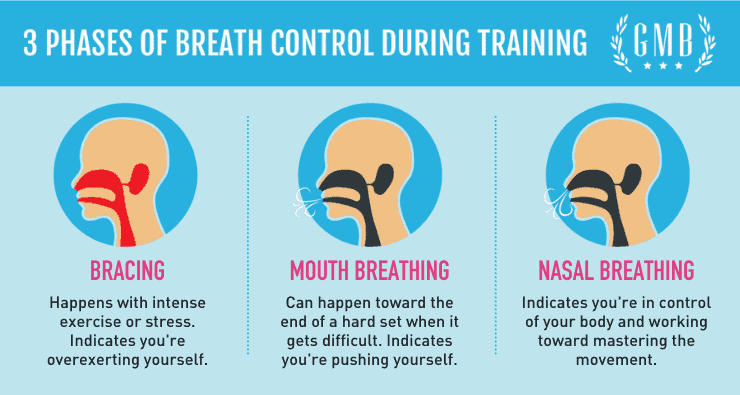
Phase 1: Bracing and Holding your Breath
You know what this is like. Think of when you run up a flight of stairs, or pick up some heavy furniture. When a movement gets difficult, you brace your core and hold your breath. This typically happens when you’re learning a new move because it’s unfamiliar. But it also happens when you’re pushing yourself too hard.
This is fine when you’re getting your bearings, but it’s an indicator that the progression you’re working on is too difficult, and you should work on an easier variation.
In all of our programs, we start with an assessment to help you determine which variation to start with, as well as how to regress them if you need to.
Phase 2: Open Mouth Breathing
Open mouth breathing will often happen at the beginning stages of moving beyond your comfort zone. This is good because it’s how you make progress. And even if the movement is tough, it’s still a good level to be at when you’re training the movement safely and with good form.
An example would be during the ‘push’ phase of our programs where you start to practice the movement for a set period of time. Toward the end of the 45-second set, you may begin to breathe through your mouth. This is not unheard of and it’s okay as long as you’re able to keep moving with good form.
If you can’t move with good form, it’s best to modify the movement or take a short break to catch your breath and try to breathe through your nose again.
Phase 3: Nasal Breathing
Ultimately, this is where you want to end up. Being able to breathe through your nose during movements and long holds is when you know you’re mastering the exercise. But when you end up here, it’s a good sign it’s time to challenge yourself again.
We want nasal breathing happening as much as possible but you don’t need to have perfect nasal breathing to move onto the next variation. As long as the movement or hold is with good form and you can control your breath without bracing or huffing and puffing, you’re likely ready for the next progression.
Application Outside Of Training
While the above examples pertain to exercise, see how you can apply these ideas to your daily life. When you’re taking out the trash, are you bracing and holding your breath? If so, how could you do it differently?
Do you walk so fast that you can’t help but breathe through your mouth? How can you slow down and focus on breathing through your nose?
We have a bunch of opportunities throughout the day to practice our breathing without having to sit down on a pillow and do specific breathing exercises.
How to Get Started with Focused Nasal Breathing
Everything starts outside of your workouts. In short, close your mouth when breathing. When you’re relaxing, check in with yourself periodically.
Are you breathing through your nose or mouth?
Like right this second, which is it?
If your mouth is shut, you’re good. You probably don’t need to think too much about this. But if your mouth is open, it’s time to start training yourself to breathe through your nose.
Where you might struggle is during sleep. If you mouth-breathe at rest, you’re most likely doing this at night too… which is going to have detrimental effects on your sleep quality and energy levels.
Mouth breathing will dry out the airways, and is associated with sleep apnea. Remember, mouth breathing tends to push your nervous system toward the sympathetic state, which is stressful for the body and takes you out of the recovery process.
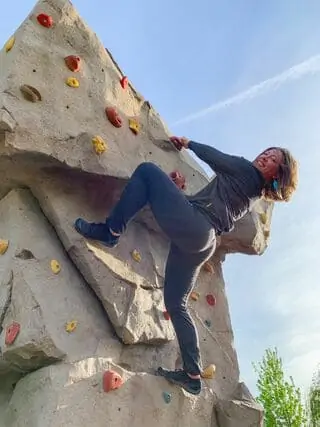 The goal here is to bring your attention to how you breathe during the day and work on it as much as you can. Once you’re able to breathe easier through your nose, this will carry over into your workouts. Think about when you take the stairs or climb the rock wall at the park.
The goal here is to bring your attention to how you breathe during the day and work on it as much as you can. Once you’re able to breathe easier through your nose, this will carry over into your workouts. Think about when you take the stairs or climb the rock wall at the park.
Keeping your mouth shut is mostly a habit. So if you’re not doing it, you will need to pay conscious attention to it long enough until it becomes automatic. Just like getting good at handstands, breathing well also requires some practice.
Some people who don’t have a problem breathing through their nose, but default to mouth-breathing during the day, will sometimes tape their mouths shut at night.
This not always necessary, but it can be a helpful tool to reinforce nasal breathing through the night. But we encourage you to try and clear your nasal passage before hitting the sack so you don’t have to resort to taping.
What to Know About ‘Branded’ Breathing Exercises
More recently, there’s a lot of hype and promise surrounding various breathing techniques and exercises. This is designed to make you think there is something magical about the breathing practice being presented and that it will give you miraculous results.
Some of the claims are:
- Improved athletic performance
- Better cold tolerance
- Enhanced creativity
- More focus
- Reaching your ‘full potential’
- Deeper sleep
- Spiritual enlightenment
And while learning how to breathe more efficiently and with control can contribute to all of these things, no single breathing practice is a holy grail. What matters most is you learn how to breath through your nose and how to control your breath.
Some of the popular brands are Wim Hof, Tummo, Holotropic, and Oxygen Advantage. They all have something to offer and many people love those methods.
🎙 Related Podcast: Breathe, Dammit!
Now for the million dollar question…
Will Optimizing Your Breath Transform Your Life?
In short, no.
Unless you have some major issues like sleep apnea, which might require medical intervention or a CPAP machine to correct.
And now for a steady dose of realism… Breathing properly is easy to learn and pretty basic at its core once you remove all the mystery behind any specific method.
The Truth™ About Breathing Exercises:
Lots of the people will tell you their specific brand of breathing exercise is the key to unlocking your human potential.
And while sitting around hyperventilating and holding your breath can make you feel something in that moment, it doesn’t go far beyond the few minutes it took to reach that state.
Most all of the special breathing methods that are advertised as helping you optimize every aspect of your life and training aren’t going to help you if you can’t learn to relax and steady your breath the rest of your day.
Anyone can half-assedly do something once, but steady improvements require practice.
🚨 Breathing Exercises Aren’t A Performance Hack
At first, if you’ve never paid much attention or practiced breathing properly, it’s going to feel limiting.
But once you get used to breathing through your nose and controlling your breath during exercise, it will lead to more predictable, sustainable performance over time.
Plus, it’s better for your overall health.
The key to getting the most out of your breathing practice is to make sure it carries over to real life. Just like everything we do with all of our programs, especially Regulator, it’s all about improving your lifestyle.
Periodically, take note of how you’re breathing during the day. You could set a few alerts to go off during your work hours to remind yourself. Then take a few moments to pay attention and practice your breathing.

Another way to be mindful of your breath is during stressful encounters. Someone piss you off at work? See if you’re holding your breath.
Once you’re aware, focus on breathing in and out your nose slowly. Inhale deeply for 2 seconds, and push that air out slowly through your nose for 6 seconds. Do that for about 5 cycles and you’ll be back in control of your breathing.
What if I Broke My Nose or Have a Nasal Obstruction and Can’t Breathe Properly?
We hear you. Ryan has broken his nose through gymnastics and martial arts over the years.
And it took him a while to regain the ability to nasal breathe easily but he’s glad he stuck with learning various techniques to control his breathing again. But depending on the severity of your nasal breathing problems, you might not get to a point without some sort of medical intervention to breathe through your nose at all times, especially during high-level activities.
But learning how to breathe through your nose during the day while relaxing and during sleep will be of major benefit for everything else you’re doing.
We’ll Show You The Exact Steps We Use To Recover Better Between Workouts
Your recovery practice is just as important as your training. Breathing through your nose the other 23 hours of the day is going to have much more of an impact on your training than only breathing properly during your 1-hour session.
We encourage our clients to work on making progress faster by doing active recovery and regular breath work with our program, Regulator.
Regulator is made up of 3 specific exercises you can use to recover better and make yourself less prone to injury. One method we use is controlled breathing exercises and we walk you through how do to them. You can spend as little as 15 minutes per day, either on your days off, or before or after your workouts.
Is it time you took control of your breath?
Recover Faster Between Workouts
Regulator will help you make more progress with fewer setbacks from any GMB Program or other physical activity.

